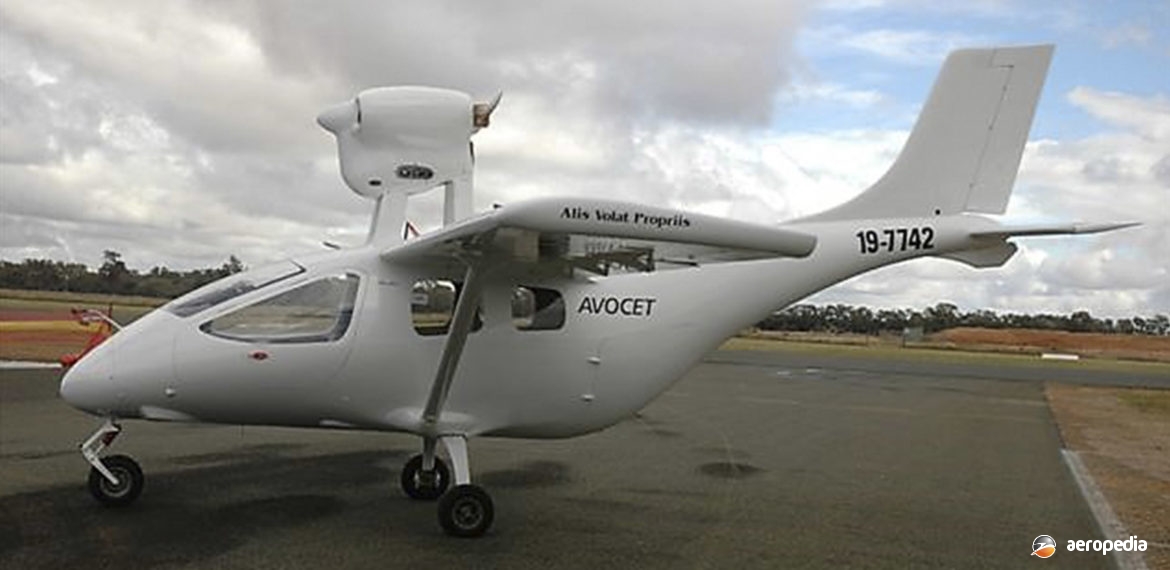Photograph:
Prototype of the Avocet Outback 19-7742 (c/n 1) at Temora in April 2011 (P J Ricketts)
Country of origin:
Australia
Description:
Two-seat light sport aircraft
Power Plant:
One 90 kw (120 hp) Jabiru 3300 six-cylinder horizontally-opposed liquid-cooled engine with multi-point SDS fueld injection
Specifications:
- Loaded weight: 750 kg (1,653 lb)
History:
The Avocet Outback was a two-seat light sport aircraft designed and built by Michael Sharples with the assistance of his son-in-law, Alex, and son Nicholas. It was designed for touring but with opening cargo doors at the rear of the fuselage in order to fit a small motor-cycle or scooter for those occasions when, on arrival at a country airstrip, ground transport was not available. Mr Sharples himself had previously built Jabiru J-6 and J-230 light aircraft and, in order to save building costs, used readily available parts obtained from Jabiru Aircraft at Bundaberg, QLD.
The wings were from a Jabiru J-250, and the wheels, undercarriage and engine were all built by Jabiru. It was announced the fuselage would be made available in kit form and the other parts would be available from Jabiru. The engine was mounted on a pylon above the fuselage allowing for a 2 m (6.56 ft) load bed. Plugs and moulds were made to build the fibreglass fuselage, the clamshell doors opening to the rear. It has a Rotec throttle body and dual controls.
Tigerfish Aviation of Norwood, SA designed three variants, including models with retractable floats, pontoons and a flying-boat hull type configuration. The production version was to have a single pressure-relieved turret, a 1.57 m (6.15 ft) diameter propeller and winglets. The aircraft was also to be known as the Red Necked Avocet, after an Australian native bird. It was expected the aircraft would be for personal transportation with easy access to a loading bay for camping gear, golf clubs, etc.
The prototype 19-7742 (c/n 1) was registered with RAA on 20 January 2011, and flown to and first demonstrated, at the Recreation Australia Natfly event at Temora in April 2011. However, on 16 August 2011, whilst being flown from Port Augusta, SA to Bourke, NSW, the aircraft had an engine problem, diverted towards Wilcannia, NSW and crashed on Comarto Station, 60 km (37 miles) west of that town, being extensively damaged, the pilot being conveyed to Broken Hill by the Royal Flying Doctor Service for attention. The aircraft was subsequently rebuilt and returned to the RAA register.
In late 2020 it was noted for sale with manufacturing moulds.

